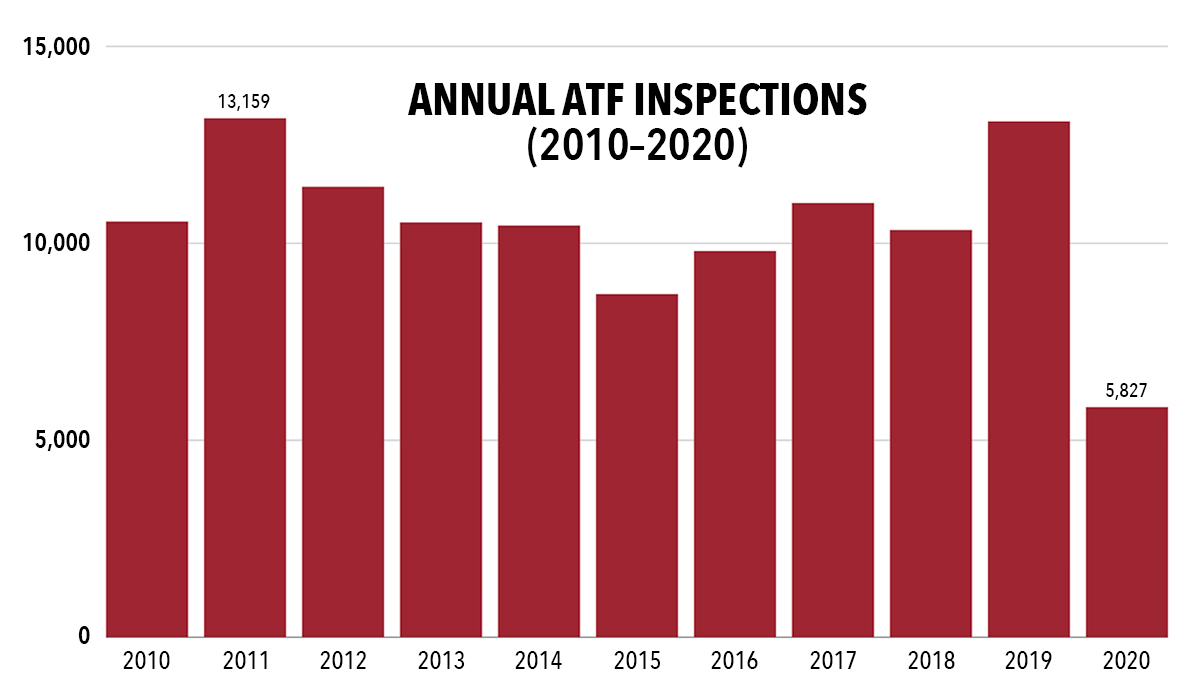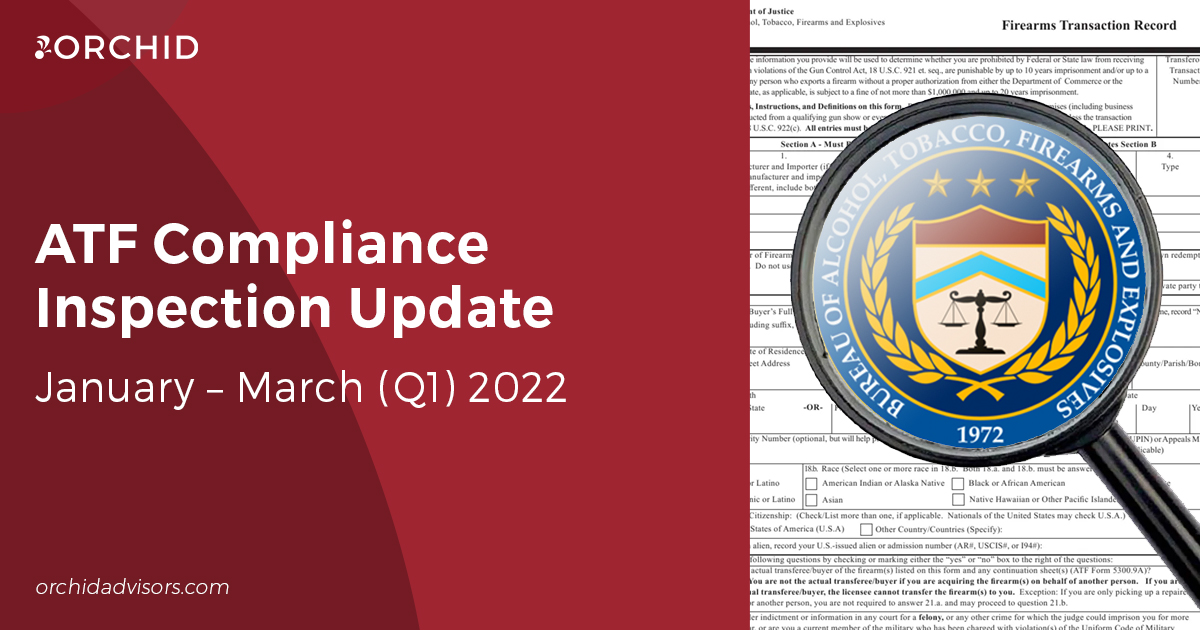This past fall, the ATF began publishing monthly firearms compliance inspection reports pursuant to new Biden administration measures to “prevent and respond to gun crime.” Previously posted annually, the monthly reports provide the public with greater transparency and accountability in the enforcement of laws regulating firearms businesses.
Six months after the first report was posted, we now have inspection numbers for the first quarter (January–March) of 2022.
Table of Contents
Context & Limitations
January–March 2022 Data
Inspection Trends
Proactive Compliance
Because ATF firearms compliance inspection reports were only published annually up until last November and no monthly historical data exists prior to October 2021, it’s difficult to establish context for the new reports. At the time of writing, the ATF has also yet to update its annual inspection data from 2020 to 2021 on its website, preventing us from attempting to estimate a monthly average. As such, any findings and trends developed from these reports should be viewed as inconclusive until more data is made available.

Further, it’s important to note these reports do not tell the whole story of ATF firearms compliance inspections. First, total inspections may still be low compared to pre-pandemic numbers, but the administration’s “zero tolerance” policy towards “rogue gun dealers” suggests monthly numbers will continue to rise. Second, while data for warning conferences and revocations are provided in the monthly reports, there are additional levels of corrective action for inspection violations and the ATF has the discretion in how to apply such action. Lastly, these reports fail to address the qualitative impact of compliance inspections on FFLs, which can impact customer traffic, sales and production schedules.
However, knowing these limitations, these reports can still provide good intel for FFLs and the firearms industry on the activity of ATF industry operations investigators (IOIs) across their 25 field divisions.
Below are the monthly ATF firearms compliance inspections completed between January and March 2022.
In the first quarter of 2022, ATF IOIs completed a total of 1,656 firearms compliance inspections across the country, representative of 1.25% of 132,000 active FFLs. Averaging 552 FFL inspections over that period, inspections increased month-over-month – including from December 2021 (378 inspections) to January – and grew 29% from January to March. Comparatively, the ATF completed 1,268 total inspections, or an average of 423 per month, between October and December 2021.
Of the ATF’s field divisions, Kansas City and Columbus led the way with over 200 inspections each, followed by Dallas, Houston and Phoenix. Eighteen field divisions (72%) completed less than 75 inspections during January, February and March, with 80% recording 77 or fewer. The Newark field division, which is responsible for overseeing the entire state of New Jersey and its 486 FFLs, completed six (6) total inspections.
Between January and March, 30 ATF inspections resulted in a warning conference, with another 12 resulting in license revocation. Compared to 2020 numbers (the most recent available), in which over 5,800 total inspections were conducted, resulting in 306 warning conferences and 40 revocations, first quarter averages suggest warning conferences are down 155% while revocations are up 17%. Of all field divisions, Denver has recorded the most revocations (4) in 2022, twice as many as the next highest field division in Seattle (2).
Given that inspections are low probability-high impact events, the best way to protect your FFL is to implement operational practices and technology suitable to reduce your compliance risk. Contact Orchid’s legal professionals today to schedule a mock ATF inspection and learn how we can protect your FFL from ATF violations.
April–June (Q2) 2022 Inspection Data
July–September (Q3) 2022 Inspection Data
October–December (Q4) 2022 Inspection Data








0 Comments